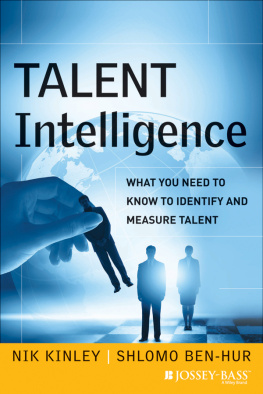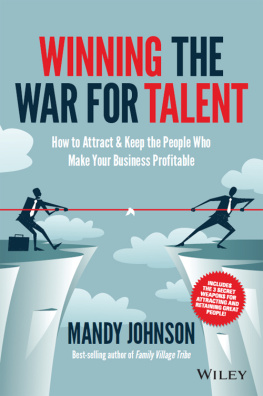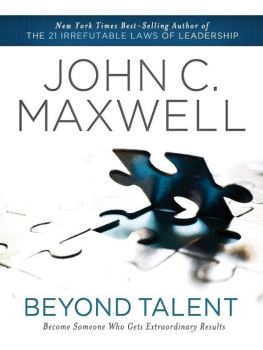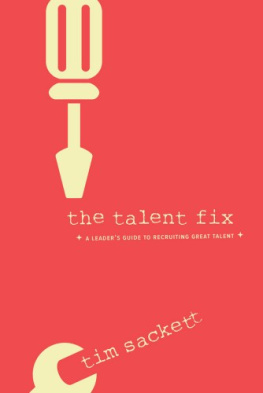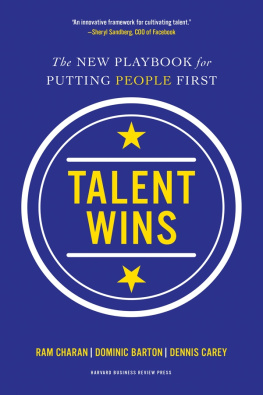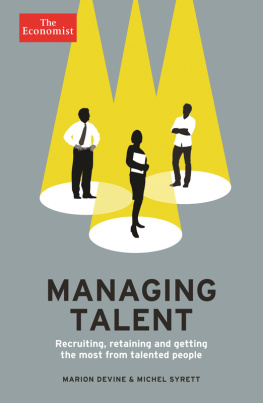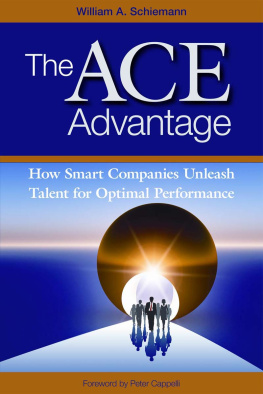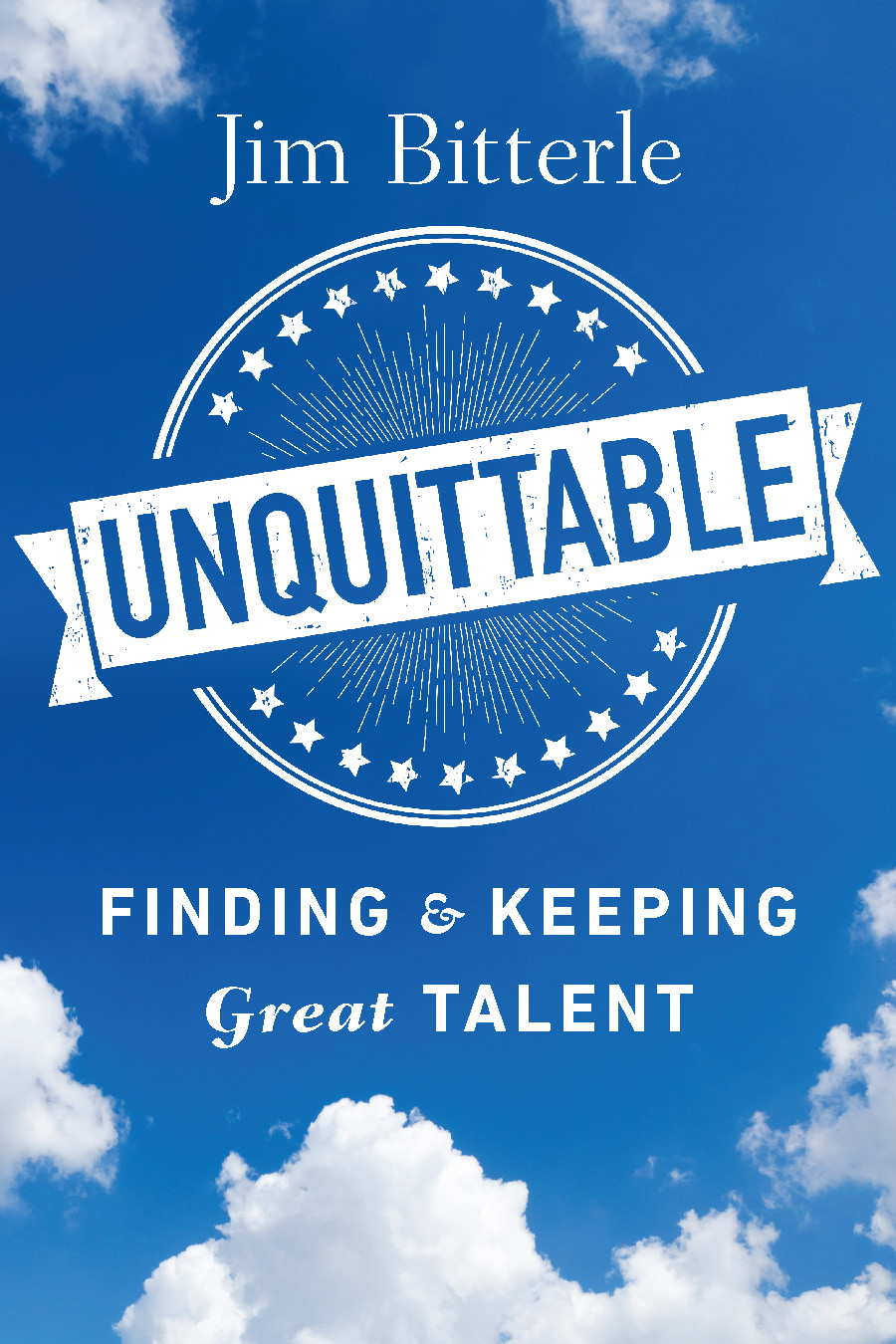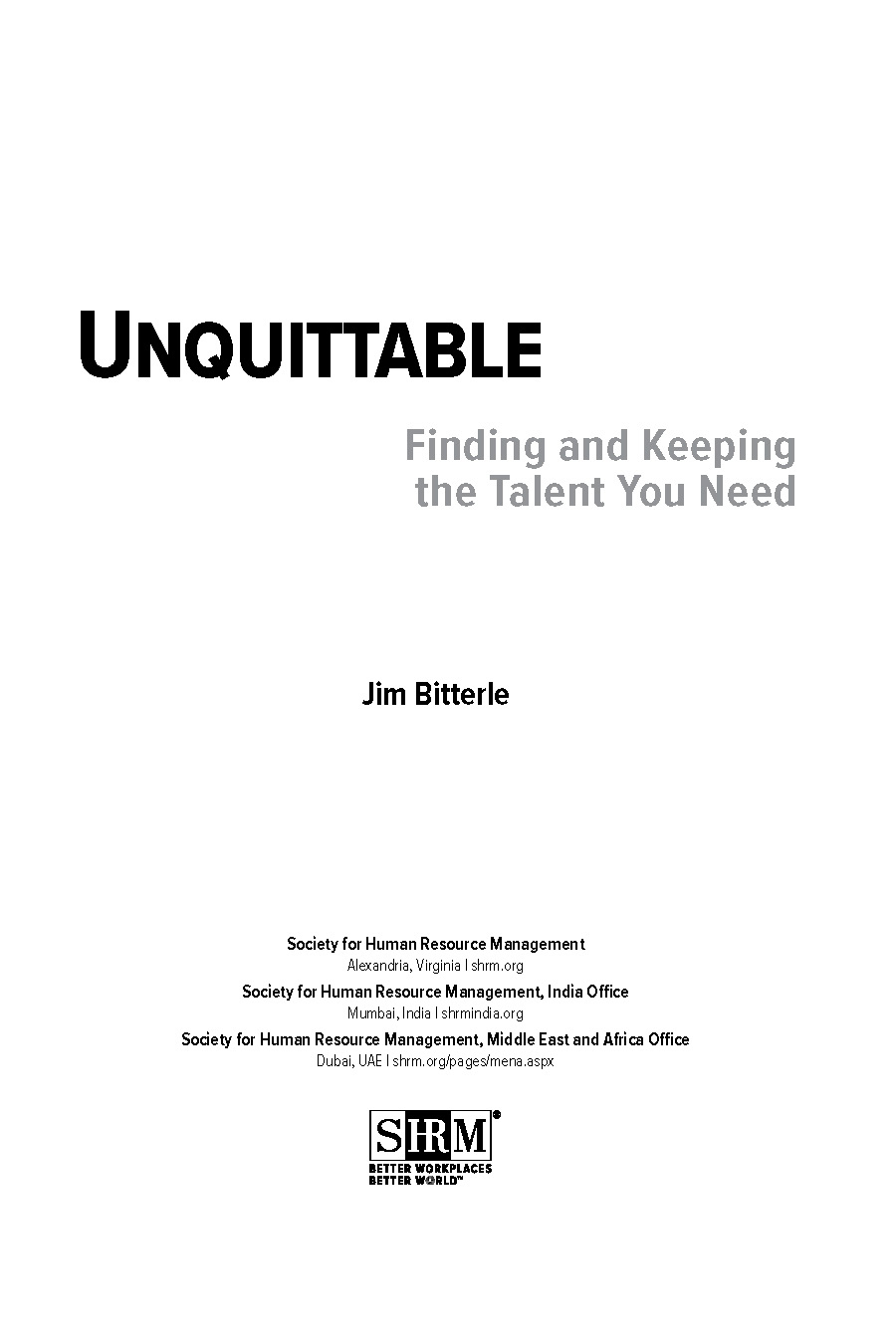Unquittable
Copyright 2020 Jim Bitterle. All rights reserved.
This publication is designed to provide accurate and authoritative information regarding the subject matter covered. It is sold with the understanding that neither the publisher nor the author is engaged in rendering legal or other professional service. If legal advice or other expert assistance is required, the services of a competent, licensed professional should be sought. The federal and state laws discussed in this book are subject to frequent revision and interpretation by amendments or judicial revisions that may significantly affect employer or employee rights and obligations. Readers are encouraged to seek legal counsel regarding specific policies and practices in their organizations.
This book is published by the Society for Human Resource Management (SHRM). The interpretations, conclusions, and recommendations in this book are those of the author and do not necessarily represent those of the publisher.
This publication may not be reproduced, stored in a retrieval system, or transmitted in whole or in part, in any form or by any means, electronic, mechanical, photocopying, recording, or otherwise, without the prior written permission of the publisher, or authorization through payment of the appropriate per-copy fee to the Copyright Clearance Center Inc., 222 Rosewood Drive, Danvers, MA 01923, 978-750 -8600, fax 978-646 -8600, or on the web at www.copyright.com . Requests to the publisher for permission should be addressed to SHRM Book Permissions, 1800 Duke Street, Alexandria, VA 22314, or online at http://www.shrm.org/about-shrm/pages/copyright--permissions.aspx . SHRM books and products are available on most online bookstores and through the SHRMStore at www.shrmstore.org .
The Society for Human Resource Management is the worlds largest HR professional society, representing 285,000 members in more than 165 countries. For nearly seven decades, the society has been the leading provider of resources serving the needs of HR professionals and advancing the practice of human resource management. SHRM has more than 575 affiliated chapters within the United States and subsidiary offices in China, India, and United Arab Emirates. Please visit us at www.shrm.org .
Library of Congress Cataloging-in -Publication Data
Names: Bitterle, Jim, author.
Title: Unquittable : finding & keeping the right talent / Jim Bitterle.
Description: First edition. | Alexandria, VA : Society for Human Resource Management, [2020] | Includes bibliographical references and index. | Identifiers: LCCN 2020010672 (print) | LCCN 2020010673 (ebook) | ISBN 9781586446598 (paperback) | ISBN 9781586446604 (pdf) | ISBN 9781586446611 (epub) | ISBN 9781586446628 (mobi)
Subjects: LCSH: Employee selection. | Employee retention.
Classification: LCC HF5549.5.S38 B53 2020 (print) | LCC HF5549.5.S38 (ebook) | DDC 658.3/11--dc23
Printed in the United States of America
FIRST EDITION
PB Printing 10 9 8 7 6 5 4 3 2 161.15204
This book is dedicated to each and every employee at EDSI. Ive never seen a group that is so devoted to helping clients, all while supporting each other at a level I never dreamed possible.
Acknowledgments
I d like to thank Kevin Schnieders, EDSIs owner and Chief Servant Leader, for consistently encouraging the design and implementation of an amazing corporate culture. This book would never have materialized without his support. Id also like to acknowledge Kathy Wilson Peacock; her assistance with storytelling, writing, editing, and moral support were fundamental to ensuring this book is not only informational but also fun to read.
About the Author
J im Bitterle, managing partner of EDSI Consulting, spent ten years as an executive in the specialty chemical business and has led both domestic and international businesses. He also brings more than twenty-four years of management consulting experience to his insights into talent attraction, development, and retention. Jims experience in a variety of general management, operational, organizational improvement, and strategic consulting engagements, as well as direct experience as a corporate leader, gives him great perspective in understanding the universal need for all organizations to find, develop, and retain great people. Jim has an MBA in finance and marketing, with honors, from the Kellogg School at Northwestern University. He also holds a BA degree in operational management from the Broad School of Management at Michigan State University.
Introduction
H as this ever happened to you? You spend over a month recruiting, interviewing, hiring, and onboarding someone for a long-vacant position, only to have the individual resign after a short time on the job. Sometimes theyre polite and resign properly; other times they walk out the door at the end of the day and never come back. Either way, youre back to square one.
Its tempting to blame the individual for wasting the companys time and money, but you also wonder how the whole debacle could have been prevented. The good news is that, yes, there are ways to make such woeful occurrences as rare as a hassle-free software update on your laptop. However, like most good things in life, it will take hard work. Plus, leaders must be willing to adopt and follow through with new ways of doing things.
Lessons Learned from the Four Failwaves
For the past thirty years, Ive witnessed some colossal business train wrecks, first as a manager and later as a consultant. Youve probably seen some train wrecks too, and maybe youve even been a victim of one. The casualties of bad business decisions include once-iconic American brands: Pontiac, Howard Johnsons, Blockbuster, Sears. Nothing lasts forever, but bad business decisions can kill a company quicker than you can say Toys R Us.
Businesses fail for all kinds of reasons, many of which can be traced back to the issue of talent. Notice the semantics: The term talent recognizes that people are the heart and soul of a business in a way terms like workers, staff, or employees do not. Talent needs to be recognized and developed; workers and employees need to be managed and controlled.
The transition from workers to talent was a happy watershed and marks a new era. In fact, I call this new epoch the Talent Failwave because companies and organizations that fail will most likely trace their downfall to disrespecting and neglecting to develop the talents of those who work for them. The Talent Failwave will affect the business world as significantly as the previous three failwaves of quality, cost, and technology. Each of these failwaves holds a lesson for us, and each is studded with timely case studies. Smart organizations are led by those who understand this history and know how to change with the times. A good leader will know where weve been and where were going. To understand how we arrived at the Talent Failwave, lets take a look at the previous three.
The First Failwave: Quality
In the 1970s, global manufacturing quality left a lot to be desired. This created an opportunity for companies that could create high-quality , reliable products. They positioned their goods and services as being more reliable than the other guys. Quality Failwave, companies adapted to new demands, systems, and procedures. If they didnt, they fell behind, failed, and went the way of the dinosaur.
The Second Failwave: Cost Competition
Next, rampant consumerism changed the business landscape as companies began a race to the bottom. The winners were the companies that could manufacture or sell products cheaper than their competitors. Main Street, USA, became a ghost town while big-box retailers set up shop over yonder, surrounded by acres of parking lots. Waves of general stores, hardware stores, machine shops, and a myriad of other businesses went bust. They just couldnt stay competitive with their low-cost rivals. Quality was no longer the primary concern, and neither was employee training or job satisfaction. However, savvy companies that couldnt compete on price survived by creating a meaningful point of difference. For example, Mediocrity was everywhere, but smart companies learned how to set themselves apart from the low-cost competition. Those that didnt have a point of difference and couldnt compete on price failed.


